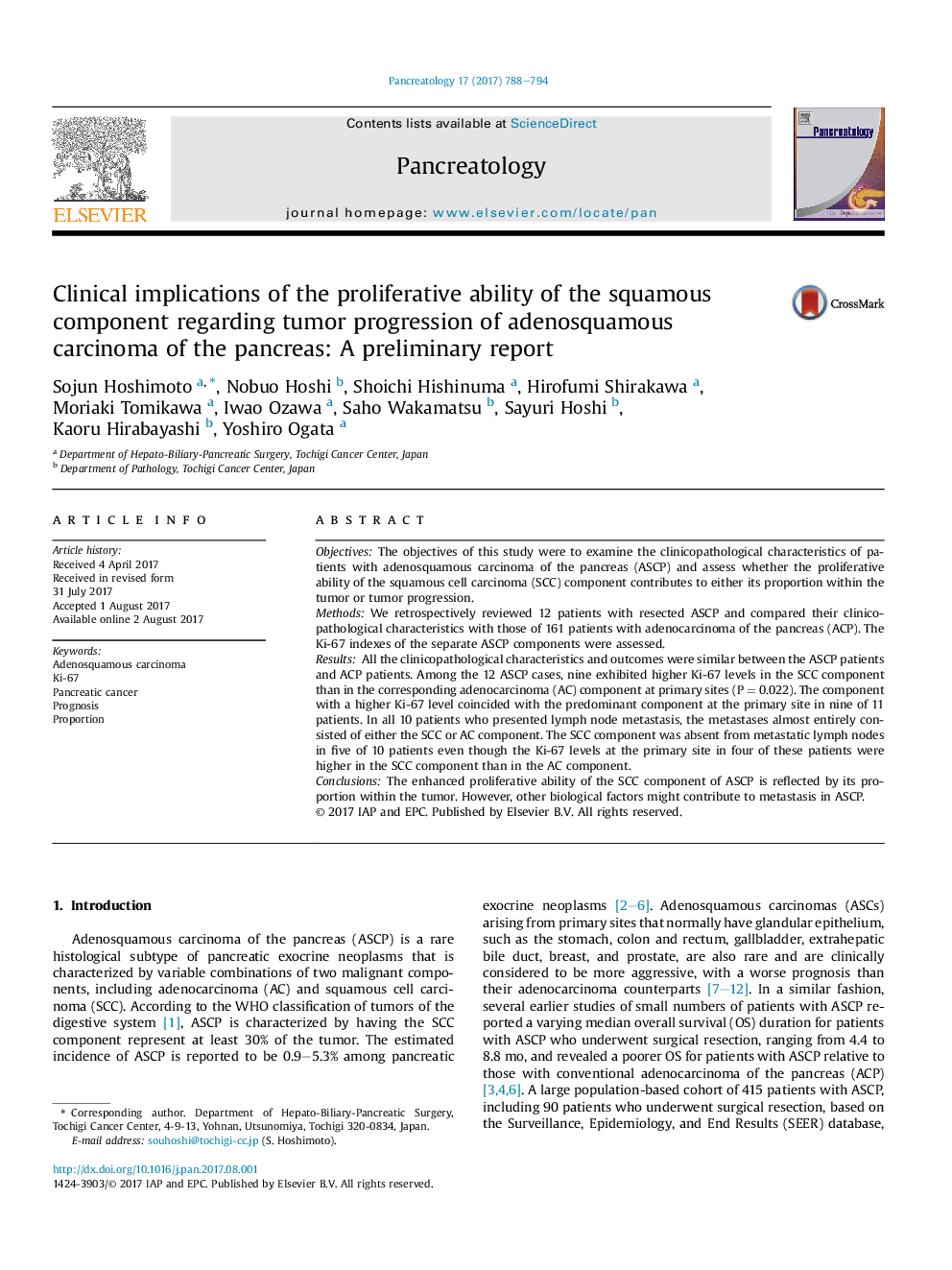| Article ID | Journal | Published Year | Pages | File Type |
|---|---|---|---|---|
| 5661118 | Pancreatology | 2017 | 7 Pages |
ObjectivesThe objectives of this study were to examine the clinicopathological characteristics of patients with adenosquamous carcinoma of the pancreas (ASCP) and assess whether the proliferative ability of the squamous cell carcinoma (SCC) component contributes to either its proportion within the tumor or tumor progression.MethodsWe retrospectively reviewed 12 patients with resected ASCP and compared their clinicopathological characteristics with those of 161 patients with adenocarcinoma of the pancreas (ACP). The Ki-67 indexes of the separate ASCP components were assessed.ResultsAll the clinicopathological characteristics and outcomes were similar between the ASCP patients and ACP patients. Among the 12 ASCP cases, nine exhibited higher Ki-67 levels in the SCC component than in the corresponding adenocarcinoma (AC) component at primary sites (PÂ =Â 0.022). The component with a higher Ki-67 level coincided with the predominant component at the primary site in nine of 11 patients. In all 10 patients who presented lymph node metastasis, the metastases almost entirely consisted of either the SCC or AC component. The SCC component was absent from metastatic lymph nodes in five of 10 patients even though the Ki-67 levels at the primary site in four of these patients were higher in the SCC component than in the AC component.ConclusionsThe enhanced proliferative ability of the SCC component of ASCP is reflected by its proportion within the tumor. However, other biological factors might contribute to metastasis in ASCP.
